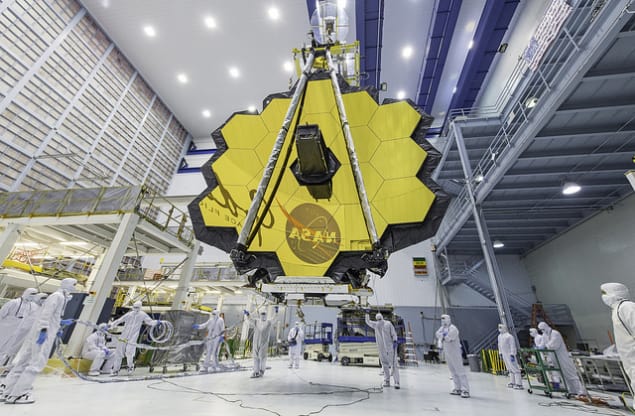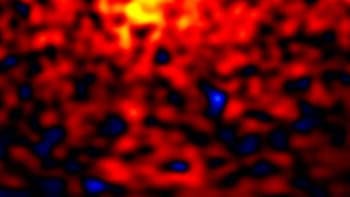
NASA has announced that it will delay the launch of the James Webb Space Telescope (JWST) to May 2020. The mission was expected to launch mid-2019 but continuing issues in testing and combining the observatory’s components have pushed it back a year.
The decision to delay the launch will likely mean that the project exceeds the $8bn budget mandated by Congress in 2011. NASA has said it will now establish an independent review board, chaired by NASA veteran Thomas Young, to investigate the impact, with the agency expected to send a revised budget to Congress in late June. “The primary issue will be getting congressional authorization or a funding measure passed in fiscal year 2019 to get relief for Webb,” says NASA spokesperson Bob Jacobs.
The [JWST] is a really complex machine and rigorous testing is required to have a high confidence of success
Thomas Zurbuchen, associate administrator for NASA’s science mission directorates
Developed by NASA along with the European and Canadian space agencies, the JWST will feature a mirror three times the diameter of the Hubble space telescope. Astronomers believe that the JWST will revolutionize their understanding of early star formation and exoplanets.
‘Failure is not an option’
The news of the delay comes after the US Government Accountability Office (GAO) released a report in late February stating that the JWST was unlikely to meet its 2019 launch date. One of the issues facing the JWST is the craft’s huge 21 x 14 m sunshield that will provide a cold and thermally stable environment for the mirror and science instruments. Deployment tests of the sunshield took much longer than anticipated and engineers discovered tears in the ultrathin fabric, which have now been fixed.
“Webb is the highest priority project for the agency’s science mission directorate, and the largest international space science project in US history,” says acting NASA Administrator Robert Lightfoot. “All the observatory’s flight hardware is now complete, however, the issues brought to light with the spacecraft element are prompting us to take the necessary steps to refocus our efforts on the completion of this ambitious and complex observatory.”

James Webb Space Telescope completes final cryogenic testing
Indeed, it is crucial that there are no issues once JWST launches. Unlike Hubble, which is in orbit around the Earth, JWST will instead be placed out of reach for astronauts at Lagrange Point 2 – a gravitational balance point some 1.5 million kilometres beyond the Earth’s orbit around the Sun. “Webb is a really complex machine and rigorous testing is required to have a high confidence of success,” noted Thomas Zurbuchen, associate administrator for NASA’s science mission directorate. “We have one shot to get this into space. Failure is not an option.”



